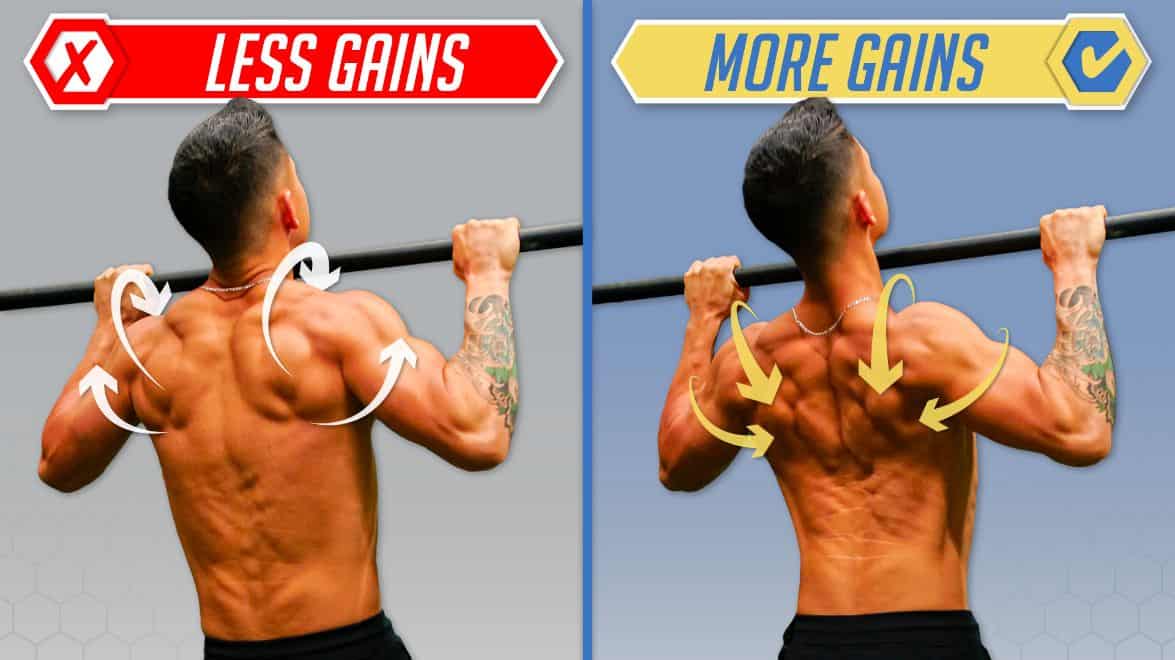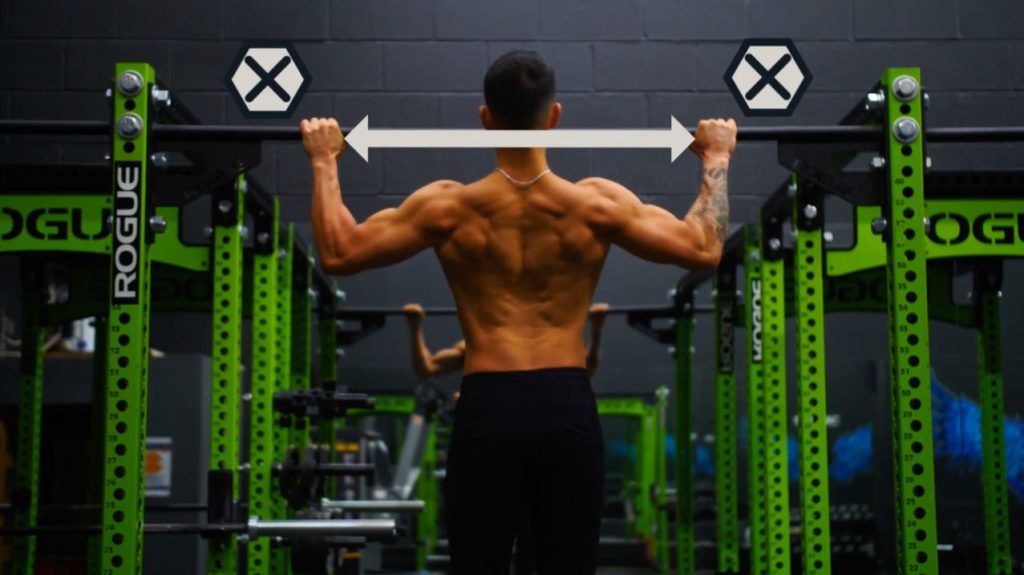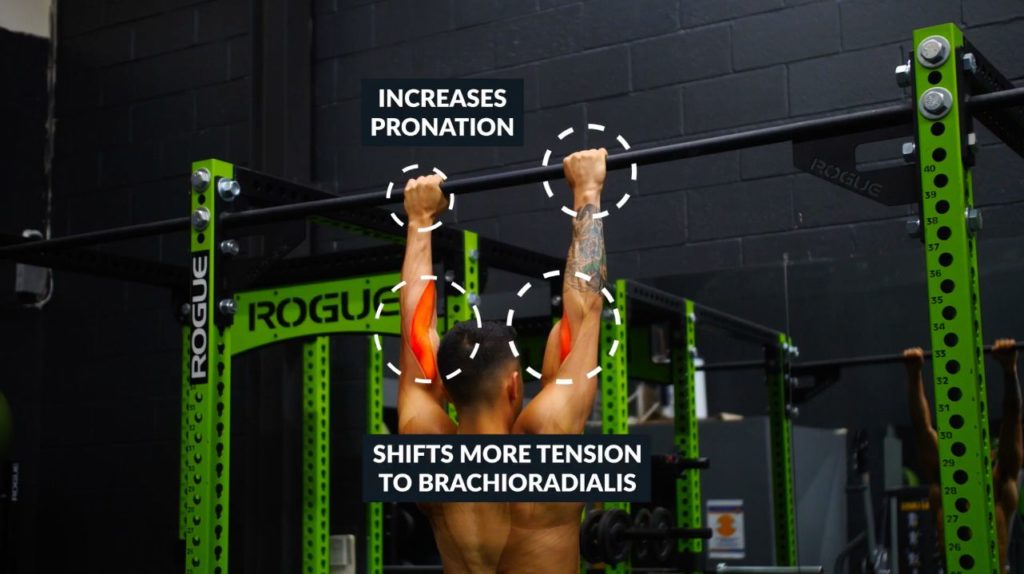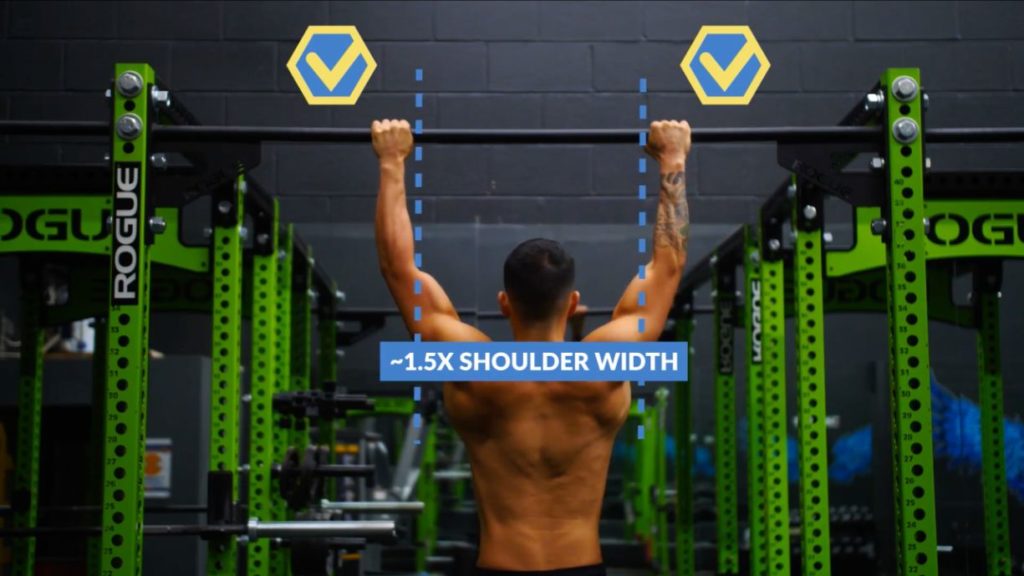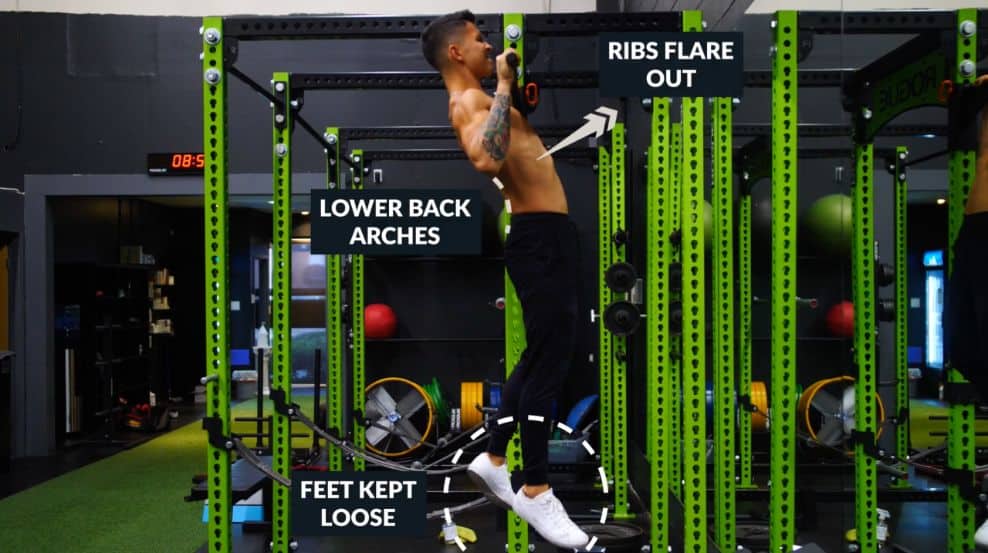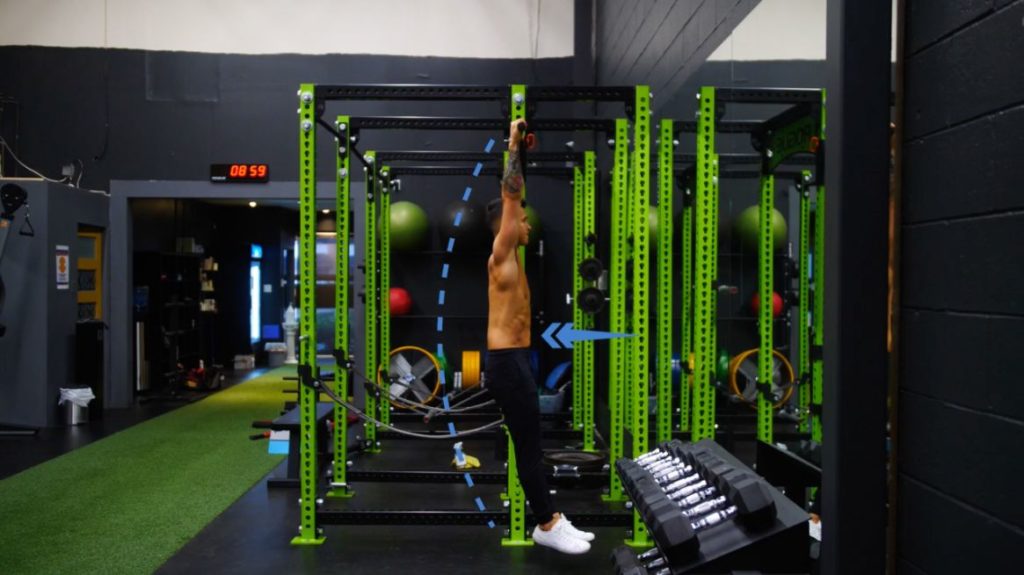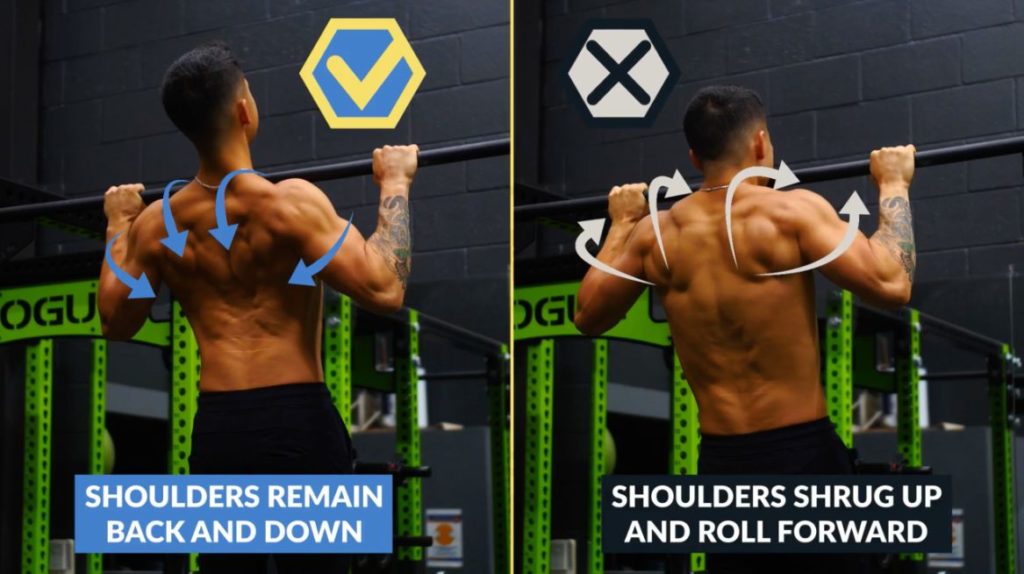How To Get Better At Pull-Ups (4 Mistakes To Fix For MORE Gains!)
Want more gains from your pull-ups? Of course, you do! In this article, I cover the 4 mistakes you need to fix to get better at pull-ups.
Pull-ups are one of the oldest, yet most widely-used back exercise out there. And for good reason. They’re convenient to do. Not to mention, very effective at growing and strengthening your mid and upper back muscles. But, as simple this exercise may seem, the truth is that most lifters screw this movement up with a few common errors. And these mistakes take away the effectiveness of this exercise. That's why I’ll cover exactly what those errors are in this article. Once you fix them, you'll instantly start experiencing better gains with this exercise.
Of course, you shouldn’t only learn - and fix - training mistakes related specifically to your pull-ups. Every aspect of your training will benefit if you take the time to understand and correct the common lifting mistakes for each muscle group. And that's precisely what I cover in every single one of my programs - so you experience the quickest gains possible. Interested?
Click the button below to take my analysis quiz to discover the best program for you:
↓
Mistake #1: Improper Grip Width
The first mistake has to do with grip width. Most people overlook the importance of something as simple as the grip during a pull-up. They also fail to realize how this shifts the muscles that are being targeted.
Don't Grip The Bar Too Wide
On one end of the spectrum, you have those who grip the bar too wide. These people often think that this is going to be more effective at hitting the lats.
But instead, this makes pull-ups less effective for two reasons:
One is that it shortens the range of motion of the movement. While this may enable you to do more reps, it ultimately compromises growth. And that's because of the limited range of motion your back muscles experience every rep.
And second, is that it puts your shoulders in a more compromised position. In fact, according to a 2016 observational study that analyzed the risks of various pull-up grips, a wide grip pull-up exhibited the highest risk of a shoulder injury and impingement. This is due to the position that the shoulder is placed in throughout the movement. Obviously, in the event that you do actually end up harming your shoulder, adopting a wide grip for the pull-up is detrimental for your gains.
Don't Grip The Bar Too Narrow, Either
However, on the other end of the spectrum, you also don’t want to grip the bar too narrow. What this does is it increases the degree of pronation your forearm experiences during the pull-up. Which then shifts more emphasis to the forearm muscles, like the brachioradialis.
This shifts some of the tension away from your back muscles. Worse still, it now makes your forearm muscles the limiting factor in your pull-up. Meaning that instead of stopping the set because your back has fatigued, you’re forced to stop because your forearm muscles have fatigued.
So, when it comes to how to improve on pull-ups, what you want to do is grip the bar not too wide and not too narrow. And there does seem to be a sweet spot here. If we look at grip width research on the lat pulldown, which is executed in a similar fashion as the pull-up, we know that a medium grip of about 1.5x shoulder width seems to be the best grip.
It not only maximizes the activation of the back muscles, but also seems to be the grip in which we’re strongest. So apply this to your pull-ups. Use a grip that’s slightly outside of shoulder width. And you’ll likely experience not only a stronger and safer pull-up but one that hits the muscles that you’re intending to target.
Mistake #2: Disengaged Core
The second mistake you’re making is failing to properly engage your core during the exercise. Muscle activation research on the pull-up has shown that when performed correctly, your core will often be the highest activated muscle during the movement. Yet most people completely forget about their core during the pull-up. And, as a result, their pull-ups will look something like this, where the:
- Lower back arches
- Feet dangle loose
- Ribs flare out
Now, this isn’t necessarily “bad” per se. But it does create a great deal of instability and wasted energy during the pull-up. Which can negatively affect your strength in the movement. So instead, before you even go into your pull-up:
- Start with your legs straight if possible
- Then crunch yourself into the “C” position by engaging your abs
- From here, keep your core engaged and maintain that position as you perform each rep
Doing the above will instantly provide a ton more stability into your pull-ups. And, because you're also setting your lower back into a more stable position, you'll enable your lats to pull with more force. A little background: your lats attach into the low back. So, apply this tip. And you’ll very likely notice the resulting strength improvements right away.
Knowing what exercises can help boost the activation of a particular target muscle (e.g. the core) is challenging. Thankfully, though, the team here at BWS has the necessary expertise to do just that. Our 3-on-1 coaching program takes the guesswork out of training, nutrition, and even mobility work - so you can focus on what matters: making gains. If you're interested:
Click the button below to find out more about the 3-on-1 coaching program:
↓
Mistake #3: Losing Form At Top
The next mistake is losing form at the top of the pull-up. Most people will show pretty good form at the beginning of the pull-up. But towards the top of the pull-up, they’ll fatigue and start compensating. Usually, they do so by letting the shoulders shrug up to the ears and roll forward as they struggle to get above the bar. This puts the shoulders in a compromised position. And disengages the back muscles that we’re trying to target.
Instead, we want to keep the:
- Shoulders back and externally rotated AND
- Chest upright
...Even as we get to the top.
To ensure this happens, we need to first make sure that we’re starting the pull-up correctly. To do so, set your shoulders by pulling your shoulder blades down and back before you initiate the pull. Make sure that your shoulders move down away from your ears. This subtle movement will engage your back muscles. Thus, setting up the rest of the pull to be back dominant.
Then, as you’re pulling, simply think about pulling yourself up by leading with your chest and trying to get your upper chest or collar bone to the bar. Doing this will help ensure that your shoulders remain in their proper position. And that the back muscles remain engaged throughout the rep.
Mistake #4: Insufficient Volume
The last mistake you’re making is you’re simply not doing enough volume for your pull-ups. Most people who are stuck, and only able to do a few pull-ups or let’s just say under 10 strict pull-ups per set, attempt to improve this or compensate for this by hammering away with more volume on lat pulldowns. Many people believe that when it comes to how to train pull-ups, lat pulldowns are key.
But research has shown that the strength correlation between these two exercises is actually very weak. Your strength on lat pull downs is not highly related to the number of reps you can do with pull-ups. This is likely at least partly due to the difference in muscle activation patterns we see with the two movements.
There Are Many Different Ways You Can Use To Fit In More Volume
So instead, focus on doing more total pull-up volume. This will better transfer to your pulling strength. And there’s a variety of different ways you can achieve this even if you can’t do very many pull-ups, to begin with. In fact, a 2017 paper found that doing 5 sets of pull-ups to failure OR pull-ups to failure with additional weight OR pull-up negatives to failure over the course of 12 weeks all led to similar pull-up improvements. To be more specific: 6 additional reps.
Meaning that there’s a variety of ways to improve your pull-ups. And that sufficient volume and practice with the movement seems to be what matters most.
So, if you’re currently stuck, add in some additional sets of pull-up negatives after you’ve fatigued yourself during your normal pull-up sets. Or, if you can only do let’s say 5 or so pull-ups in a row, then just perform more sets but with fewer reps per set. 10 sets of 3 pull-ups performed with proper form will be far more effective and will enable you to accumulate more total pull-up volume than something like 3 sets of 5 pull-ups to failure would.
By using this approach and by finding ways to fit in more actual pull-up volume instead of simply using alternatives, you’ll be able to improve your body’s coordination and motor control during the pull-up. And hence be able to very quickly improve your strength and the number of pull-ups you can perform - everyday.
How To Get Better At Pull-Ups Summary
So, to sum it all up, here’s a quick recap of the main points:
First, use a proper grip of about 1.5x shoulder width.
Second, keep your core engaged before and during the movement.
Third, don’t lose form and roll your shoulders forward at the top.
And lastly, ensure you’re doing enough pull-up volume as that’s key to improving your strength with this movement.
So hopefully you were able to see that although yes choosing the right exercises is important, executing these exercises in the right manner is really what’s key to maximizing the growth you experience from them.
And for a step-by-step program that uses science to not only show you what to workout week after week, but then shows you exactly how to perform each and every exercise for maximal activation and growth while pairing this with a nutrition plan to support your recovery, then:
Click the button below to take my analysis quiz to discover the best program for you:
↓
I hope you enjoyed this article and now know how to get good at pull-ups! Don’t forget to give me a follow and connect with me on Instagram, Facebook, and Youtube as well, in order to stay up to date with my content.






